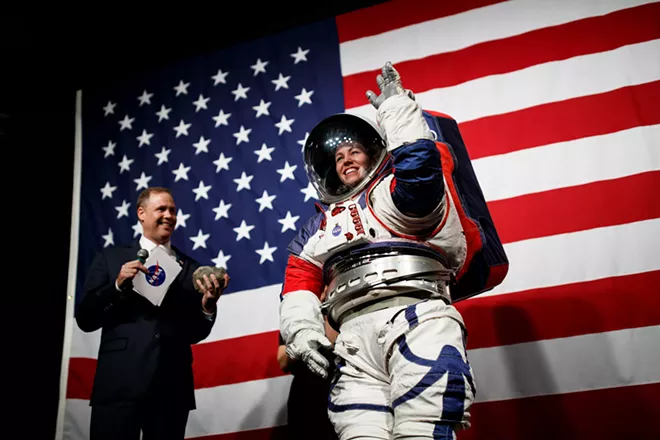
The New York Times Company
WASHINGTON — At NASA headquarters Tuesday, officials introduced two prototype spacesuits to be used during upcoming moon missions.
The new spacesuits will offer improvements over existing models for the men and women expected to wear them, including greater comfort and movement. And as NASA races to meet the Trump administration’s 2024 target for returning to the moon, the agency needs to make sure that astronauts have the technological capability to safely set foot on the surface, which no human has done since 1972.
One suit, in a bright orange fabric, is to be worn by astronauts during launch and reentry back to Earth while they are sitting inside the Orion crew capsule, the spacecraft for deep-space travel that NASA has been working on for 15 years. The suit provides protection and oxygen to the astronauts in case of an accident that causes the capsule to be become depressurized.
The other spacesuit, with a bright red, white and blue pattern, is called the exploration extravehicular mobility unit. That is what astronauts will wear as they explore the moon’s surface.
The moon suit, demonstrated by Kristine Davis, who works in the agency’s spacesuit engineering efforts, provides additional mobility for an astronaut, making it easier to walk, bend and twist.
The suits are designed to work in temperatures ranging from 250 degrees Fahrenheit down to minus 250 degrees Fahrenheit and potentially even colder places around the lunar South Pole, where NASA is aiming to send astronauts.
The suits will be made in a wider range of sizes than had been previously available. In March, a spacewalk that was to be the first conducted by two women, Christina Koch and Anne McClain, had to substitute a male astronaut, Nick Hague, because there were not two spacesuits on the station that fit both women.
When the Trump administration announced its intent to send astronauts back to the moon by 2024, NASA was missing a few crucial pieces for the mission. In addition to updated spacesuits, the agency does not currently have a spacecraft capable of landing on the moon.
NASA officials have insisted the spacesuits would be ready by 2024. That would avert the comical possibility of American astronauts landing on the moon and just looking out the windows without any garments they could wear to step outside.













